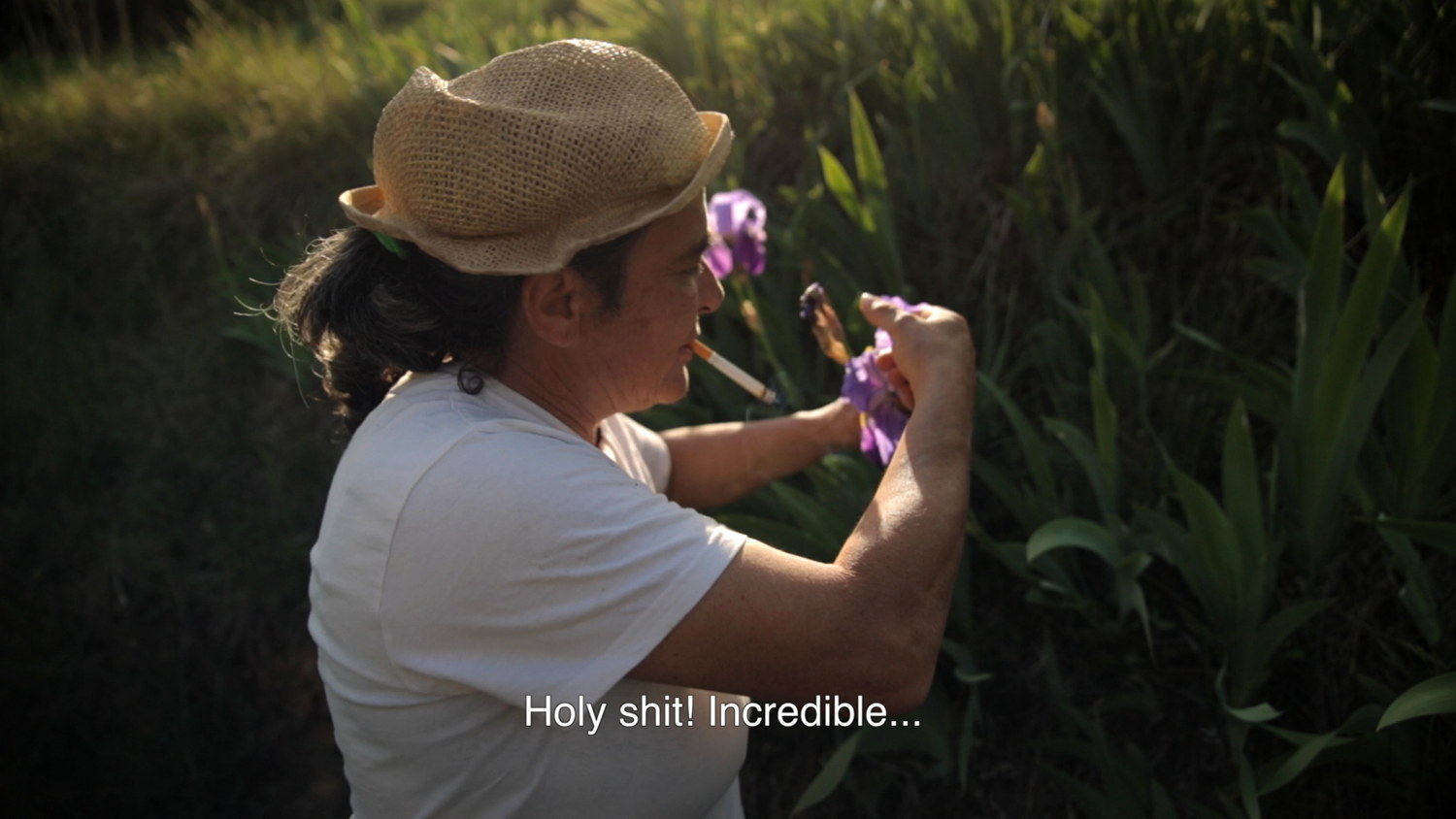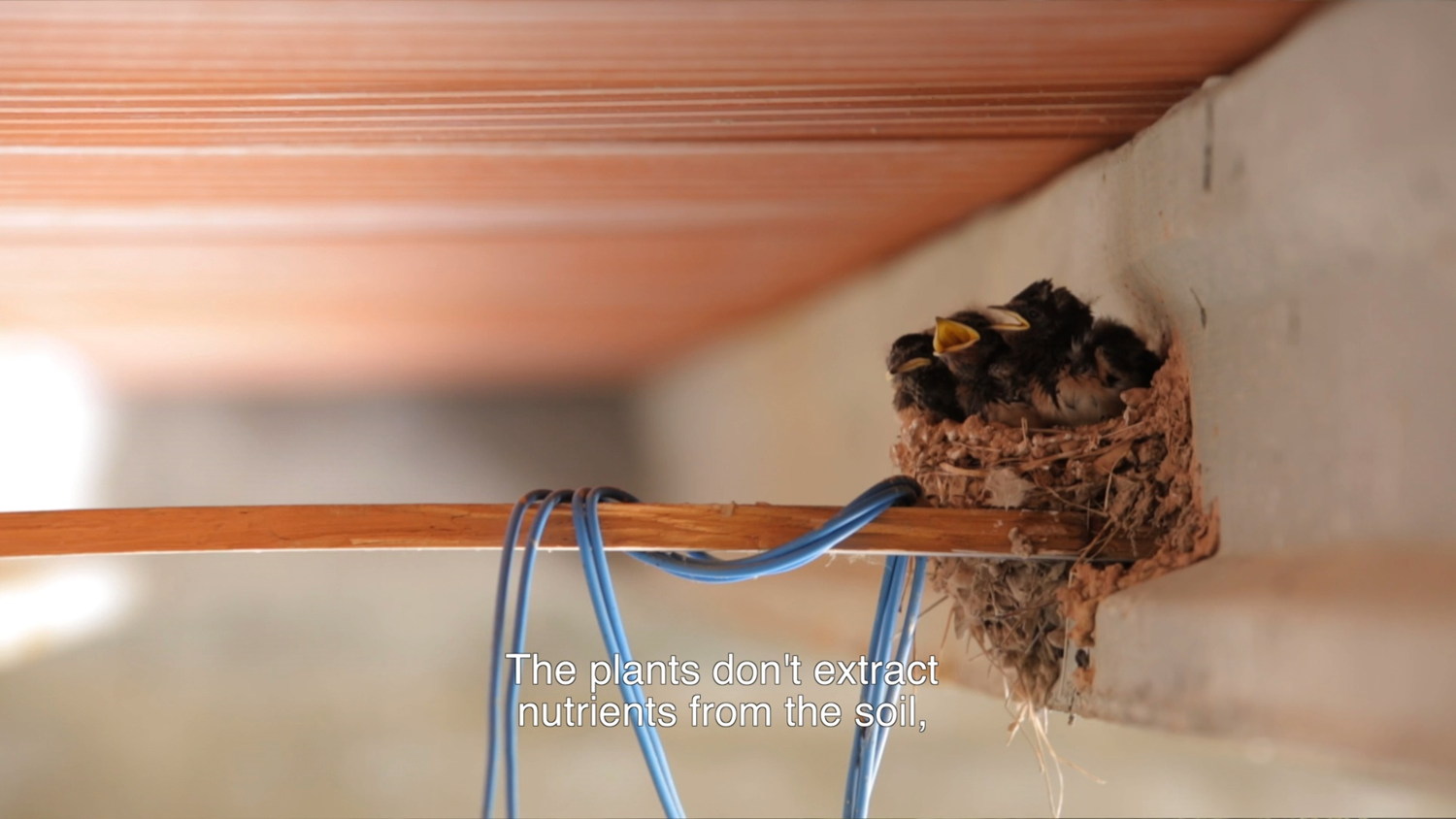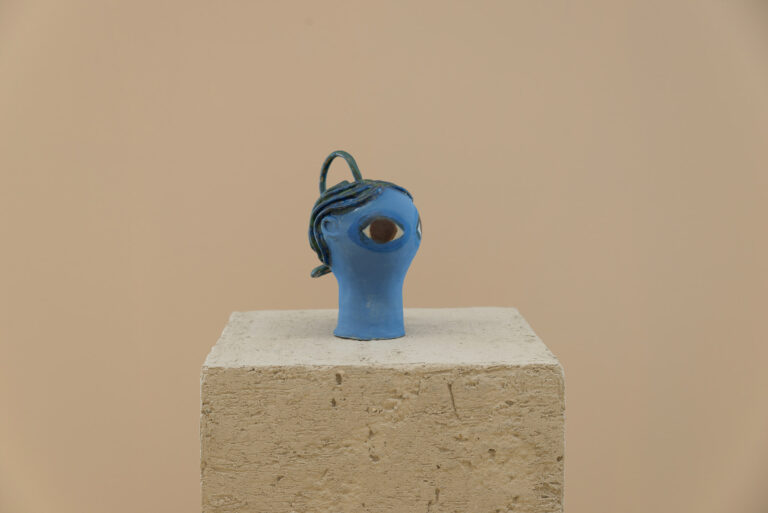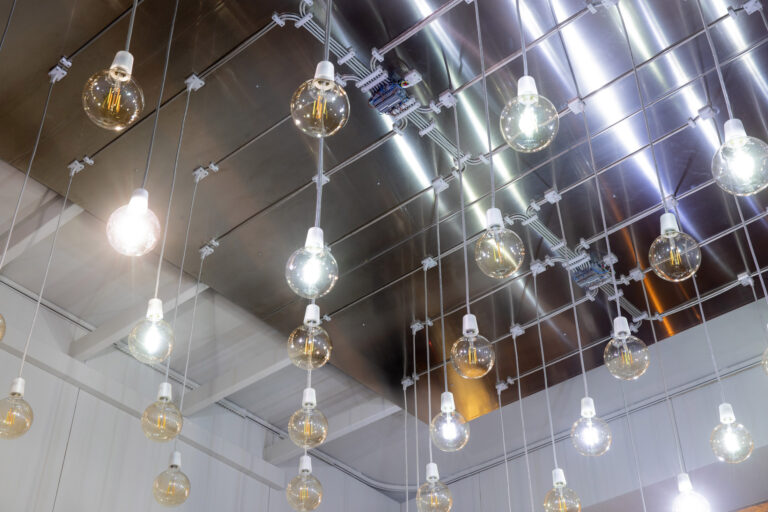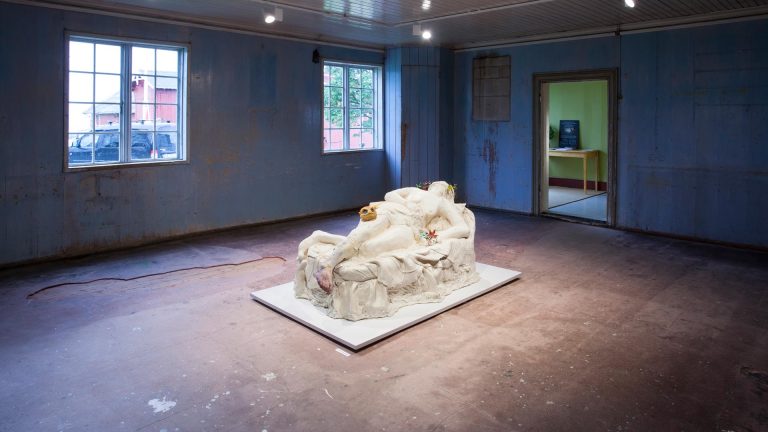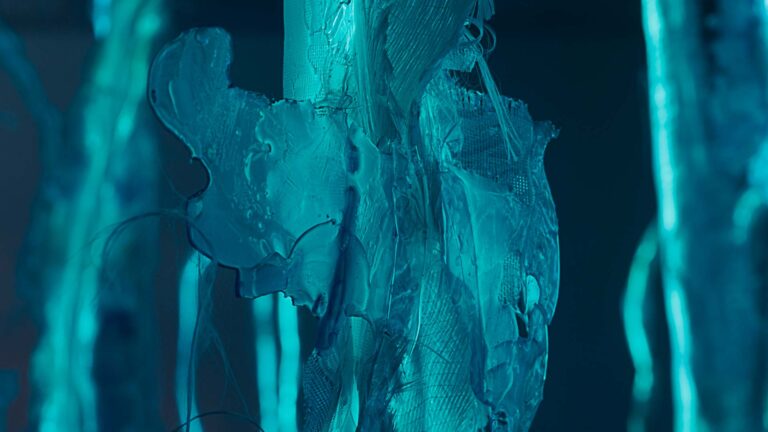
Artist: Kjersti Vetterstad
Exhibition title: Quest in Paradise
Curated by: Johanne Nordby Wernø
Venue: UKS, Oslo, Norway
Date: December 5, 2014 – January 18, 2015
Photography: Tor Simen Ulstein. Courtesy of UKS
The ephemeral is central to Kjersti Vetterstad’s “Quest in Paradise”, the last major exhibition of the year at Unge Kunstneres Samfund’s temporary home at Tullinløkka, Oslo. The exhibition spills out from the main hall to fill every room of the basement venue. With a series of video and sound installations – and a poisonous plant – Vetterstad transforms UKS into a microcosm. The eternal is juxtaposed with the most fleeting, revealing the cycles to which we all belong. At the same time, the artist asks questions about how we as humans relate to nature: Is nature a locality? Are we distinct from nature? What would the world look like if we seriously respected non-human entities?
THE AGRONAUT
An intense interest in landscape and the place of humanity in natural cycles form the background for “Quest in Paradise”. At the heart of the exhibition is The Agronaut, a documentary film that transports us to the Spanish region of Catalonia, where Vetterstad spent a long period following Montserrat Canudas Jorba, who lives like a hermit on her farm outside the village of El Bruc. The title of the film, taken from the pun Jorba uses to describe herself, plays on the Argonauts of the Greek myth of Jason and is an acknowledgement of Jorba’s own role as a navigator in the landscape she lives in and off. Jorba’s retelling of the history of the surrounding area, its landscape and the people who have inhabited it, is interspersed with images and stories from her life on the farm – a life lived in acceptance of the mechanisms that shape our surroundings. “We’ll all return to the earth,” she says in the film. “We too are biodegradable.”
The Agronaut takes us on a journey through time, from the era of fossils and into the future as Jorba envisages it. And time is an important theme for “Quest in Paradise” as a whole. By exploring the inconstancy of the world in which we live, these works distance themselves from a linear conception of time and come closer to a more cyclical perspective on life.
RESTING PULSE
UKS’s project room hosts a sound work based on recordings from a single morning at Jorba’s farm. The work functions as both a time capsule that captures a specific time and place, and a documentation of the mundane, incessantly repetitive moments that would otherwise not be noticed. The same can be said about the video installation Prophesies of the Oak on show in the main hall, which documents drifting clouds, the death throes of a beetle, and the living, breathing landscape one can find on the body of a dog.
This work also includes a sound piece composed by the musician Mirejam Shala. In her composition, Shala uses binaural beats, which correspond to and stimulate the brain-wave frequencies associated with, among other things, relaxation, memory and deep sleep. To these she has added a fourth frequency: that of the so-called Shumann resonance, an electromagnetic phenomena that pervades the surface of the earth and the lower reaches of the ionosphere.
Vetterstad’s works are a response to a specific area in Catalonia, which in “Quest in Paradise” is recreated within a new frame. Despite the obvious presence of a human protagonist, this artistic reconstruction alludes to things that lie beyond human control and exist independently of us.
















